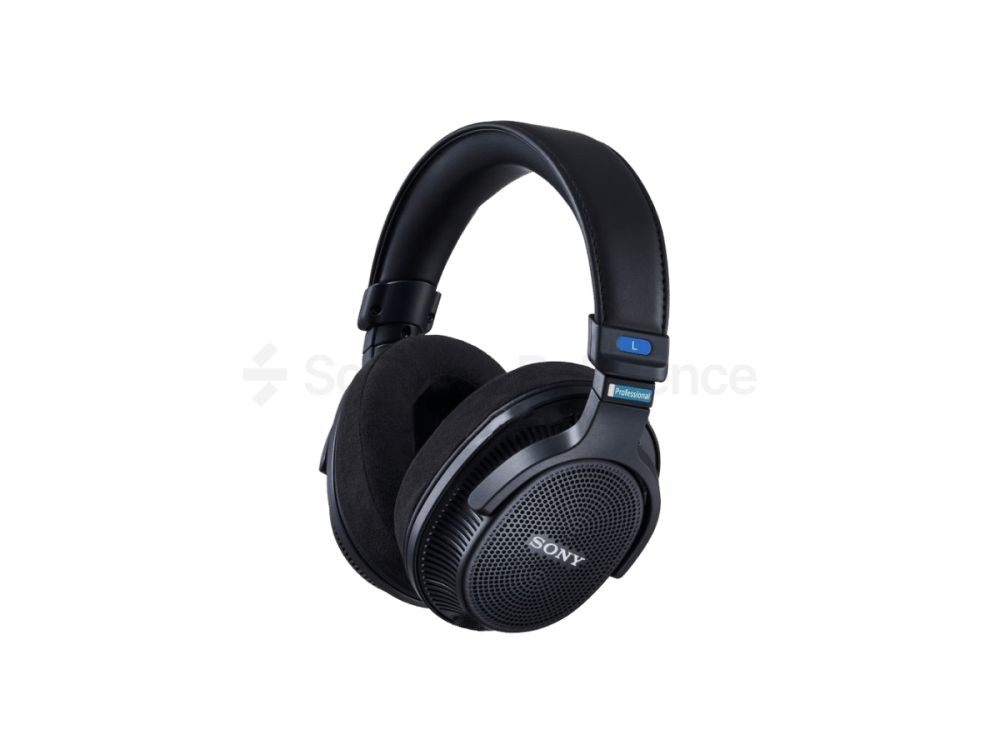Sony has long been a major player in the consumer audio market, offering a wide range of models like the popular WH-1000X series. However, until recently, their only studio-focused product was the iconic yet decades-old MDR-7506. With the MDR-MV1, Sony enters the highly competitive studio open-back segment, which is already saturated with numerous phenomenal choices. Can Sony deliver something that others can’t? Or at least provide a compelling alternative to the old market favorites?
- Extremely lightweight
- Amazing sub-bass extension
- Unparalleled unit-to-unit consistency
Pros list with SoundID Reference calibration
- Full neutrality across the frequency spectrum
- Hyped sound for open backs
MDR-MV1 has very low impedance for pro headphones, which, paired with rather average sensitivity, means that these Sonys can be used with a wide variety of devices without worrying about not achieving workable volume. They will perform well in setups with a dedicated audio interface or headphone amp, as well as mobile setups. Even when used with a laptop’s integrated sound card and SoundID Reference calibration enabled, these headphones are capable of reaching dangerously high volume.
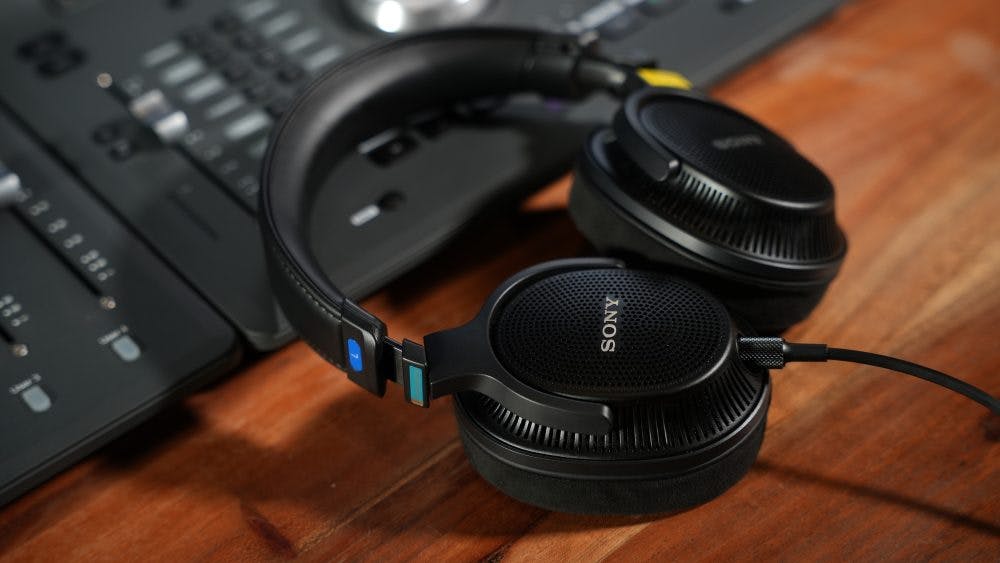
The first thing that stands out upon picking the unit up is how impressively lightweight they are despite the size. At 223 grams, these are the second lightest studio over-ear open-backs that we’ve encountered, with only Audio-Technica’s ATH-R70x beating them by a mere 13 grams. Notably, Sony has reached this weight without big compromises in durability, and using aluminum alloy for the earcups. The rest of the build is mostly plastic as expected. Overall, the construction seems more sturdy and durable than ATH-R70x despite weighing almost the same.
The memory-foam earpads are covered with an alcantara-like material and are very high quality. Less positive is that the faux leather-clad headband cushion is not available from Sony as a spare part so if it comes to that, you’ll need to resort to a non-original part from a third-party manufacturer that may alter the frequency response. However, the earpads usually wear out many times faster than the headband, and replacement pads are available from Sony dealers.
Overall, given the weight, price, and all-around great performance, the build is very well considered. The only minor criticism from a durability perspective is the material choice for the yokes connecting the headband to the earcups. It’d be more reassuring to see metal parts used there, especially given the fact that no original transport case is included nor offered aftermarket by Sony.
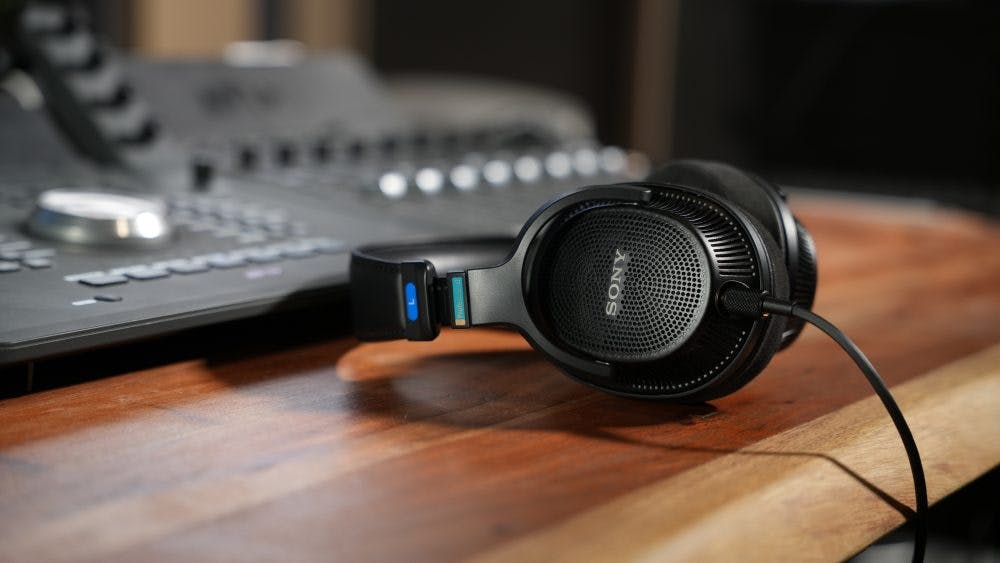
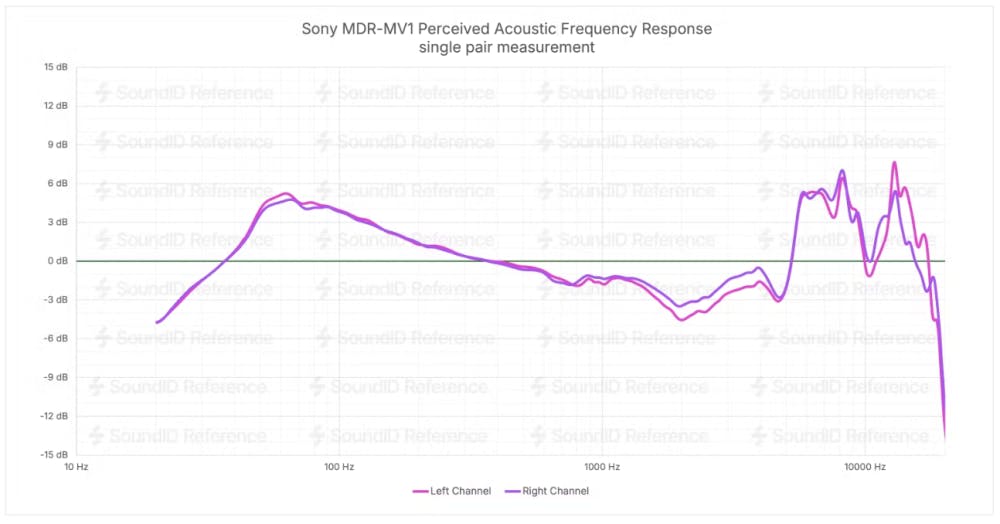
Open-back design in headphones is typically associated with relatively neutral low to mid frequency response, less pronounced resonances in the higher part of the spectrum, and perhaps most notably, a weak sub-bass extension. MDR-MV1’s break the mold and offer a frequency response curve typically associated with closed back headphones—a classic “smiley face” curve with increased bass and treble, but attenuated high-mids. This makes the MDR-MV1 perhaps the most fun-sounding pro open-backs. Be careful, though, as such a sound signature may color your monitoring in a complementary way, thus clouding your judgment and leading to thin-sounding mixes. With that said, it’s far from the “smiliest” units, and amplitude-wise, the shape does not stray away from neutral further than 6dB.
Once calibrated, the Sony MDR-MV1 becomes a serious and analytical monitoring tool. Notably, this marks the first time our calibration has applied a significant bass cut to an open-back headphone profile!
Sony has knocked it out of the park, delivering the highest manufacturing consistency we’ve seen. There’s virtually no channel imbalance to worry about. MDR-MV1s aren’t cheap at around 400 Euros, but when it comes to channel consistency, these Sonys beat headphones that cost 10 times as much.
Most of the testers found MDR-MV1 very comfortable and did not report any severe issues. The sizeable earpads will accommodate even quite large ears without touching them, thus enabling long sessions. The comfort is great and receives a high mark, however, it could be further improved by redesigning the headband. Sony MDR-MV1 doesn’t do as great a job distributing the pressure across the whole head as HD 490 Pro, but instead relies more on the top of the headband to carry the weight. This may lead to a slight pressure point forming right on top of the skull, making them feel heavier than HD 490 Pro when worn, despite the actual weight being less. Perhaps a two-part headband cushion, like on the Sennheiser, or an altered cushion volume distribution could elevate the comfort to the very top of the class.
Sony MDR-MV1 is priced similarly to perhaps its most direct competitor, the Sennheiser HD 490 Pro. At the time of writing, Sony at €400 is around €40 more expensive than Sennheiser. While it’s considerably pricier than the established classics such as Beyerdynamic DT 880 Pro or Sennheiser HD 600, it offers better build, lower weight, and sub-bass extension unlike any other open-back set.
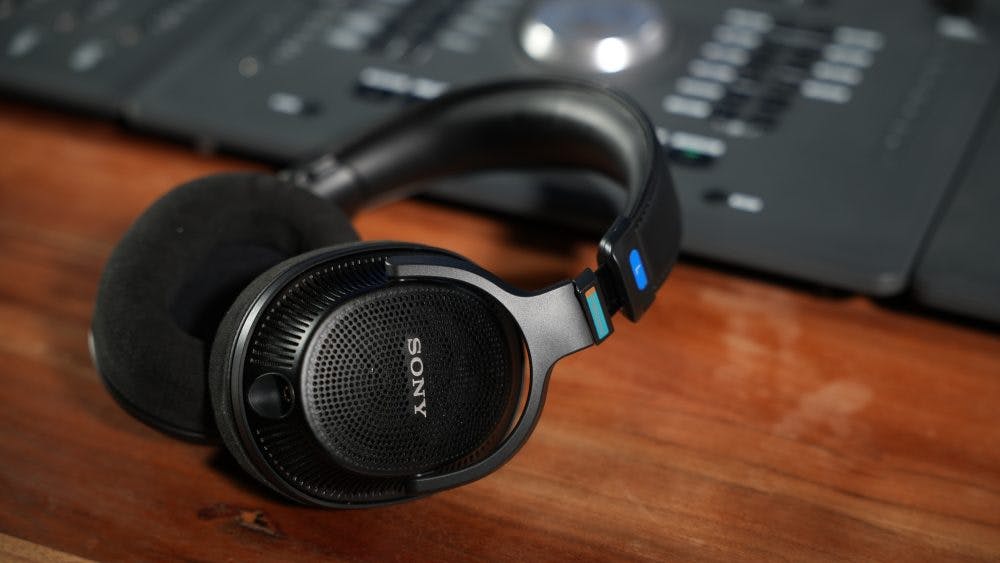
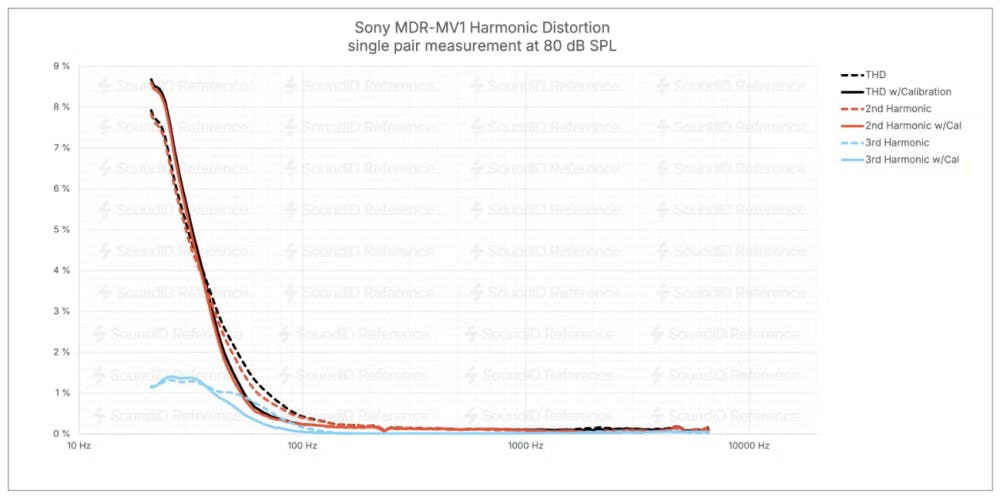
While the spike towards 20Hz looks noteworthy on the graph, it’s not audible by ear and shouldn’t cause concern. There’s no perceivable distortion throughout the spectrum.
How accurate and consistent is the correction effect among different listeners?In this regard, Sony MDR-MV1 is not among the top performers, with Neumann NDH 30, Sennheiser HD 490 Pro, Sennheiser HD 650, and Audio-Technica ATH-R70x delivering more consistent frequency response on average between different listeners. With that said, it still beats almost every closed-back model and performs rather well without unpleasant surprises in our tests. A few dB deviation is expected in the high-mid range, as with almost any other model besides the top performers outlined above.
How much do they differ pair to pair in terms of frequency response?What MDR-MV1 lacks in listener-to-listener frequency response consistency, it makes up for with exceptional manufacturing quality. Sony has done nothing short of an amazing job enforcing consistency in driver frequency response! Both pair-to-pair and left-to-right channel consistency is tighter than any other model we’ve ever measured. In terms of human perception, the three measured units can be considered identical. That also means that the SoundID Reference model average calibration profile will deliver exceptional accuracy.
Rating
Conclusion
Sony MDR-MV1 is an open-back set like no other—light on scales, heavy on bass. The frequency response follows the smiley face curve typically associated with consumer headphones, making them sound more hyped than their open-back counterparts, especially in the bass department. While they sound exciting, for mixing and mastering, a more neutral and analytical response is beneficial, and that can be achieved with SoundID Reference. When calibrated, they’re a revealing, high-precision monitoring tool. When not, they offer a fun sound signature that will be enjoyed by many for casual listening.
Final Rating
Calibration Enabled
Calibration
